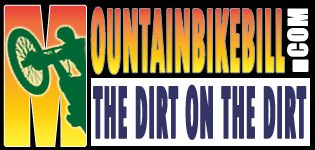Hey Bill, … I noticed you do not have any information on the XXX trail. Why is that? I have not yet been there, but I am going with some friends today because it was recommended to him….
I get emails of this theme off and on and it is a really good question. I’ll try to answer it. (And maybe rant at little too)
Not all of the trails I ride end up on my site. There are usually three good general reasons that cause me to refrain from putting a trail I may ridden on the site.
1. The trail is “sensitive” in nature – Do not automatically equate “sensitive” to mean illegal. It may just be that it is not a fully condoned trail system, such as the stuff that is considered social. Hey, I’m no saint and I may have ridden some questionable stuff to “see what the fuss is about.” There are some trails that are quite popular but are not fully legit and lots of folks ride them. These are not limited to the freeride/downhill type trails which seem to get the most flake. There are plenty of XC trails in SoCal that have some property lines or user conflict issues that do not need to be brought out online.
2. I was asked not to publish it – Yes I know how to keep a secret and if someone who showed me “The Goods” asked me not to publish a trail, even if it is legal, I may not publish it.
3. Trail Sustainability – If I personally do not think the trail could handle a bunch of additional traffic I may not publish it. I have a few unpublished and legal trails that are great trails comprised of long, narrow and pristine downhill sections that are fabulous. They are however easily shuttled. If I published these trails I am quite positive that a crap load of shuttlers would start using these trails and then start trashing them out.
This is not so much a downhiller or an XC issue as it is an irresponsible riding issue. I have seen plenty of folks on both XC as well as DH/FR rigs being skidiots. (Skidding IDIOT) I believe, on average, the folks on the bigger rigs cause more of the trail issues on those types of trails because compared to your average XC rider, they can go faster with the same skill level. The higher speeds usually requires more skill to slow the bike down and not skid. The longer wheel-base and slacker geometry of the bigger bikes also requires greater skill to navigate switchbacks and tight turns. The same average rider on the bigger bikes is more likely to blow/damage more of those type of turns than a rider on a cross-country rig. I also subscribe to the idea that Downhiller’s have a tendency to bring the downhill park mindset to the local trails, which is pretty much like trying to mix oil and water.
I’m I talking with my butt cheeks? I could be, but let the trails do the talking. All it takes for me is to look at the poorer condition of some of the trails that are easily shuttled. The San Juan trail is a wreck compared to the Trabuco Canyon. Both are great downhills but the San Juan Trail is easily shuttled where as Trabuco is not.
Now before you get all huffy puffy on me because you shuttle and own a DH/FR rig keep this in mind. I’m generalizing about average riders. My guess is that if you are excited about my statements, you are most likely not that average rider I’m talking about. Then again, check yourself and if the shoe fits, wear it and work on becoming a not-so average rider.
To Publish or Not To Publish? My going in belief is that any social trails that are kept on the down low have a poor chance of ever being legitimized. However, to publicize a trail in the wrong manner can certainly bring on an earlier demise to a trail system. Flightline could have benefited from earlier public awareness of the system, where as the “Thomas Wolgamont” trail system has an extremely slim chance of being fully legitimized so I think it is best to keep it off the airwaves.
The bottom line is that if you are wondering about a particularly trail system that is not on the site, please contact me. I might have some off-site information I can provide. If I post a write up or pictures and I am vague, it’s intentional.
Now Go Ride!
-Bill








